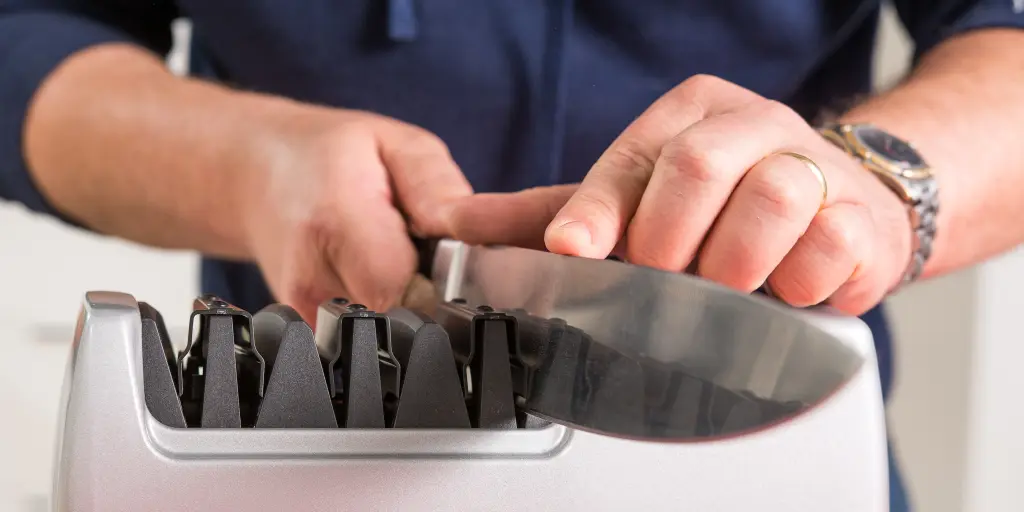Not only is keeping your knives sharp in the best interest of your fingertips, but it can also make slicing, dicing, and chopping much easier. A razor-sharp blade can seamlessly glide through the paper-thin skin of a tomato without leaving behind frayed, jagged edges. It allows for precise, clean cuts. And when you don’t have to spend as much time prepping ingredients, you can get to cooking much more quickly and efficiently.
But sharpening knives can be tricky, and if you do it incorrectly, your knives could be left in worse shape than before. We spoke with knife experts to learn their best sharpening tips, so you can restore your knives to their former glory.
Before you sharpen your knife, it’s important to know its material, its unique shape, and the angle in which to sharpen it.
The material determines how often you have to sharpen a knife, the difficulty of the task, and what type of sharpener you should use.
Chelsea Miller, a knife forger whose knives have been used in the dining rooms of Michelin-starred restaurants like Eleven Madison Park, explained, “Carbon steel or high-carbon steel knives are generally easier to sharpen at home, whereas stainless steel knives — the most common manufactured type — are more difficult to sharpen freehand.” (Freehand sharpening is when you sharpen a blade without a guided system and instead use something like a whetstone or a manual, handheld sharpener. These methods usually don’t offer the ability to adjust the angle.)



